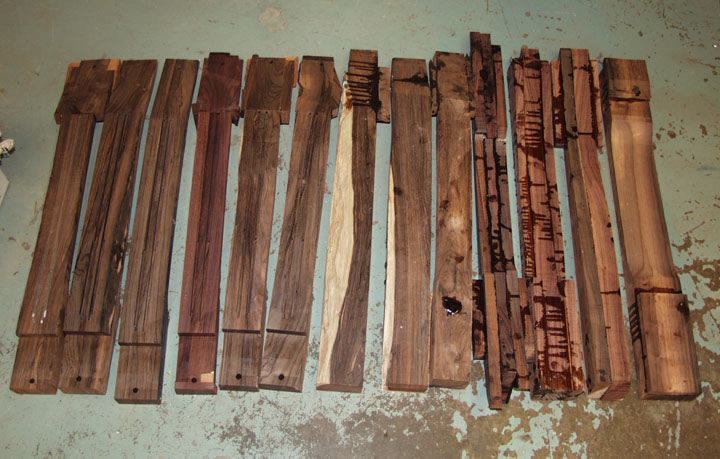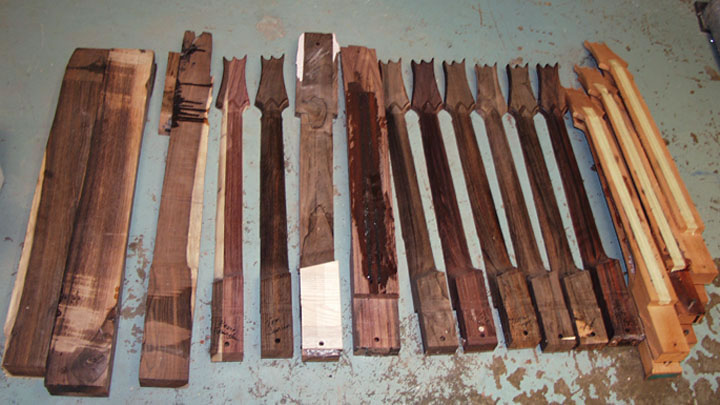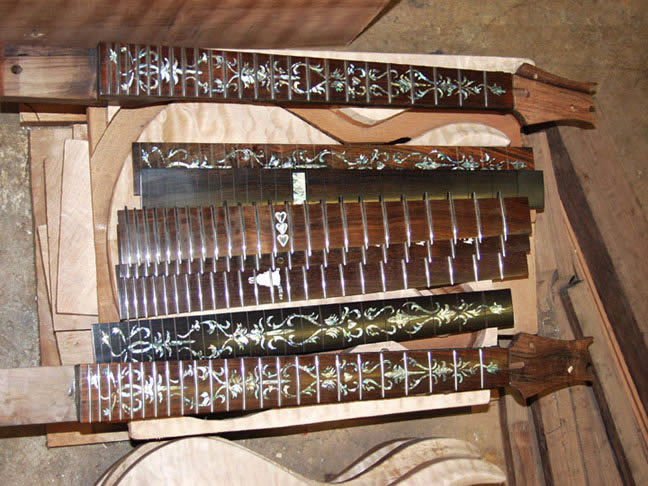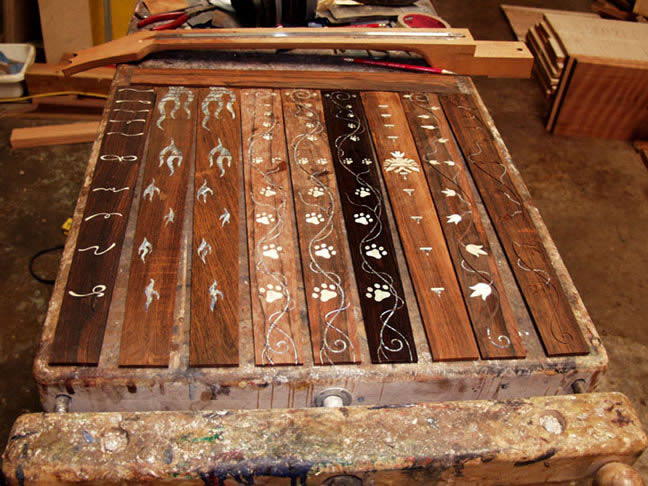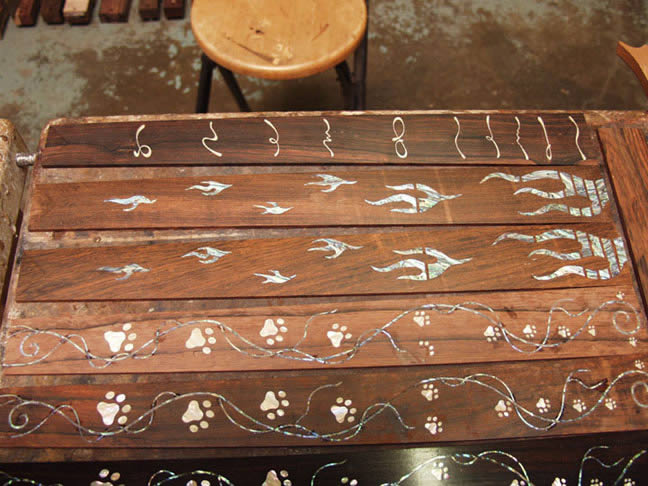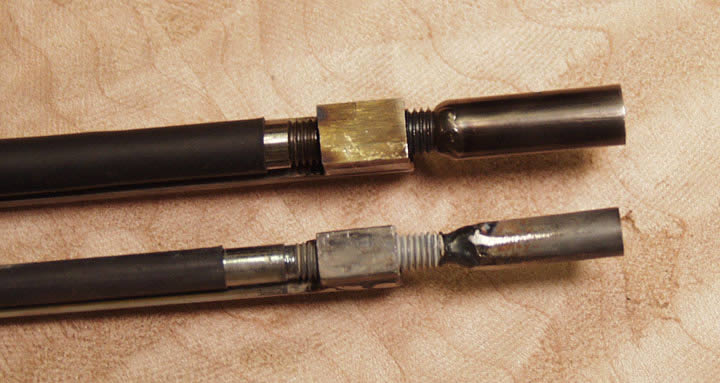|
|
|
|
|
|
|
|
|
|
|
|
|
|
|
|
|
This is the new truss rod! It is really cool. (Okay, so I have no life and get excited about something like this). My new one is the one on top. The one below it is the stuff that you buy and what comes in most guitars. Cheap, weak, and break prone. Look at the pictures above and the one below. Which one looks like it is about to break and which one looks very strong and well made? The entire thing is made of
tool steel. That is because it is the toughest, strongest stuff that I
could use. Since that is very important for this application, it is what
they are made of. Think of the steel that a drill bit, chisel, or hammer
is made of. Tough stuff and strong stuff, huh? Not only that, but I then
had to go and do more. I had the end, where the wrench goes, heat treated
so that it is incredibly hard. Why would I want to do something like that?
Well, if the allen head on the end is what the allen wrench goes into, and
someone turns it too much or at an angle, what happens? On the hideous,
cheap stuff that you can buy from suppliers, it strips out the allen head!
That or it breaks it off. Oh, the horror! Look at how easy it would be to
break the head off of the lower one in the picture. It actually looks like
you could break it with your fingers. That is because they are poorly
made. They welded the allen head on and then used a grinder to grind the
welds down. In doing this, they also severely weakened that area. That is
why they break. That and the fact that they are made of cheap, soft,
mild steel. The allen wrench is tool steel which is much harder so
it strips out the mild steel. Since the allen head on the rods I make is
also tool steel, it is an even match. By heat treating the tool
steel end, it becomes much harder than the wrench. This is why it would
strip the wrench before messing up the allen head. By the way, it would
probably take a mentally challenged individual to turn this truss rod that
much anyway. But, just in case, I made it foolproof. |
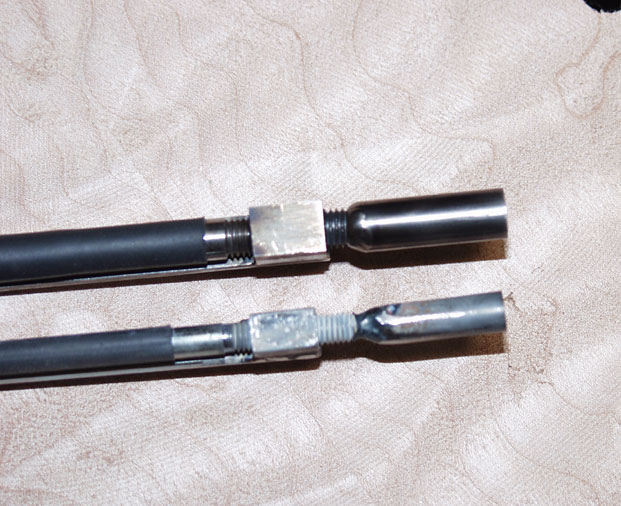 |
| If you look closely at the heads, where the they
attach to the threads of the rod, you will see how clean and perfect that
area is. Compare it to the same area on the bottom one. That is because
there is an aerospace machine shop next door and I took the rods to a
certified, military aerospace welder. Look at how fantastic his welds are!
No grinding here!
Another thing is that I increased the diameter of the rods to make them much more powerful. I did this while only increasing the truss rod size by 30 thousandths of an inch per side. So, this would be easily at least 5 times more powerful and infinitely less likely to break or strip out. I felt that it was necessary given how strong and stiff the necks are. I'm running out of things to improve. Guess I need to think some more..... |
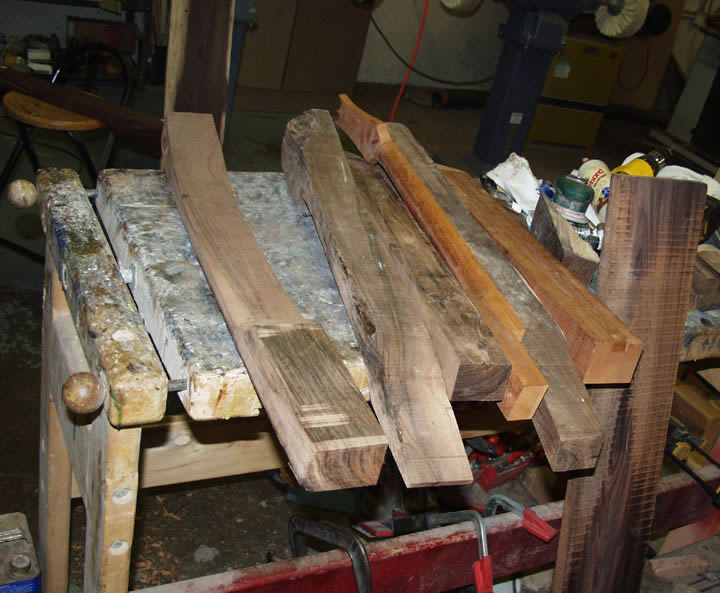 |
|
Above are some one, single piece, chunks of BRW that
are about to become necks. Below, is a BRW neck getting the slots for carbon fiber. |
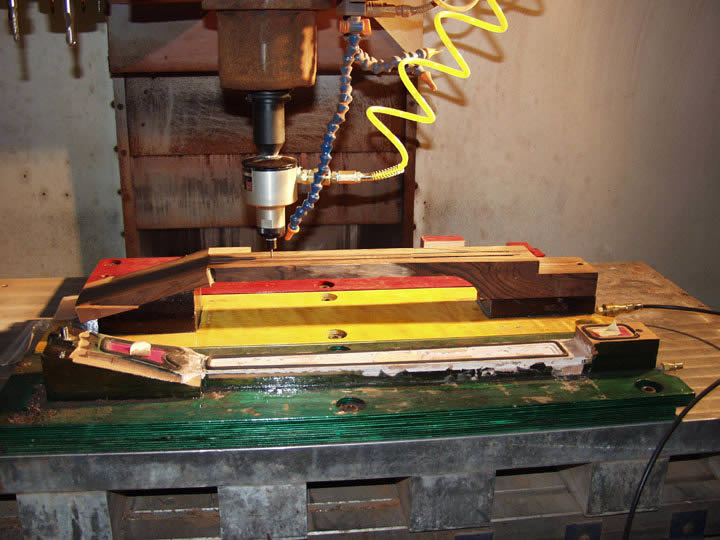 |
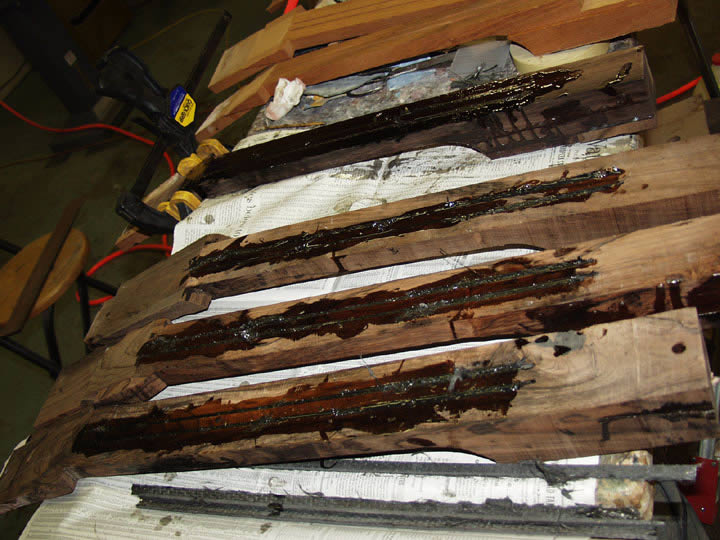 |
| Here the necks have had the carbon fiber pressed into the epoxy filled channels. Then they are allowed to cure for at least 12 hours. They will then have the fretboard surface milled flat and perfect. That will mill off the excess epoxy and we then have one stiff piece of wood! |
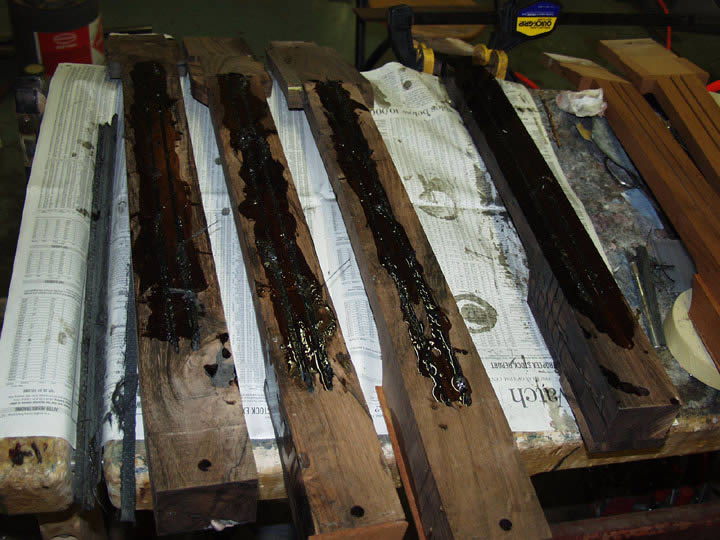 |
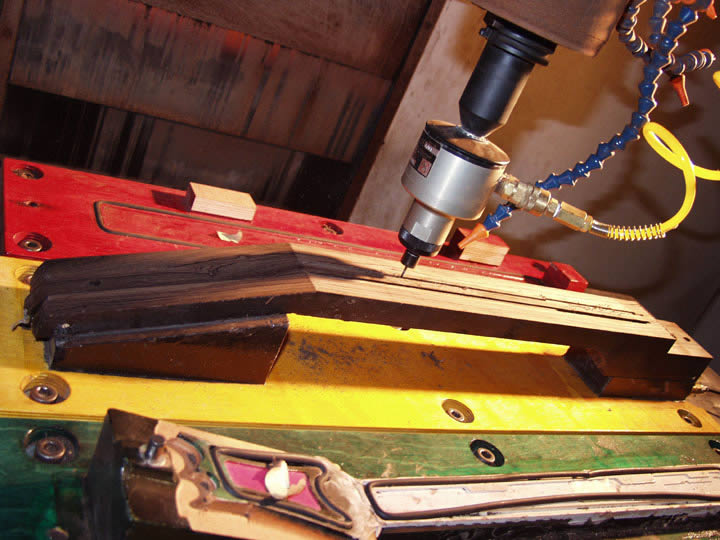 |
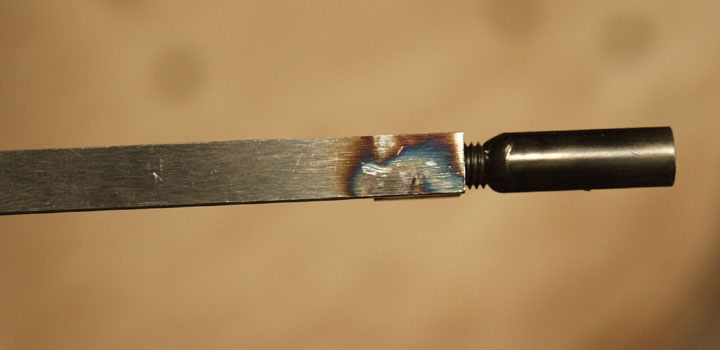 |
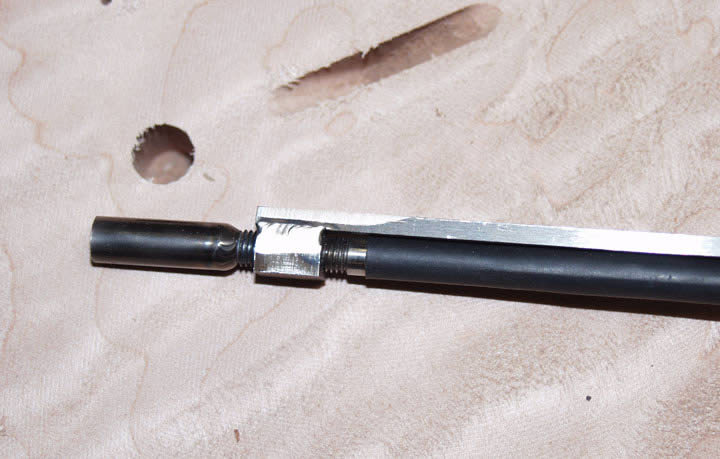 |
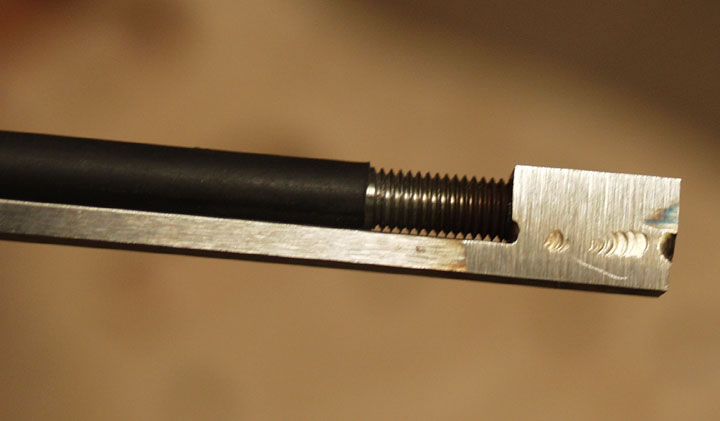 |
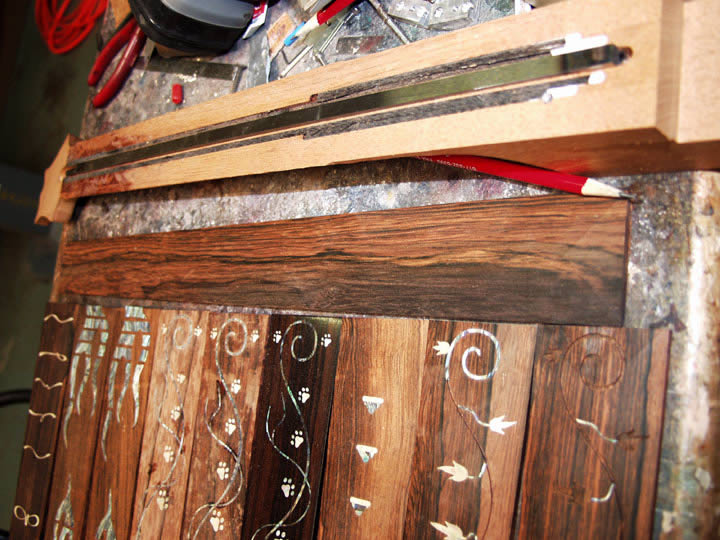 |
|
|

